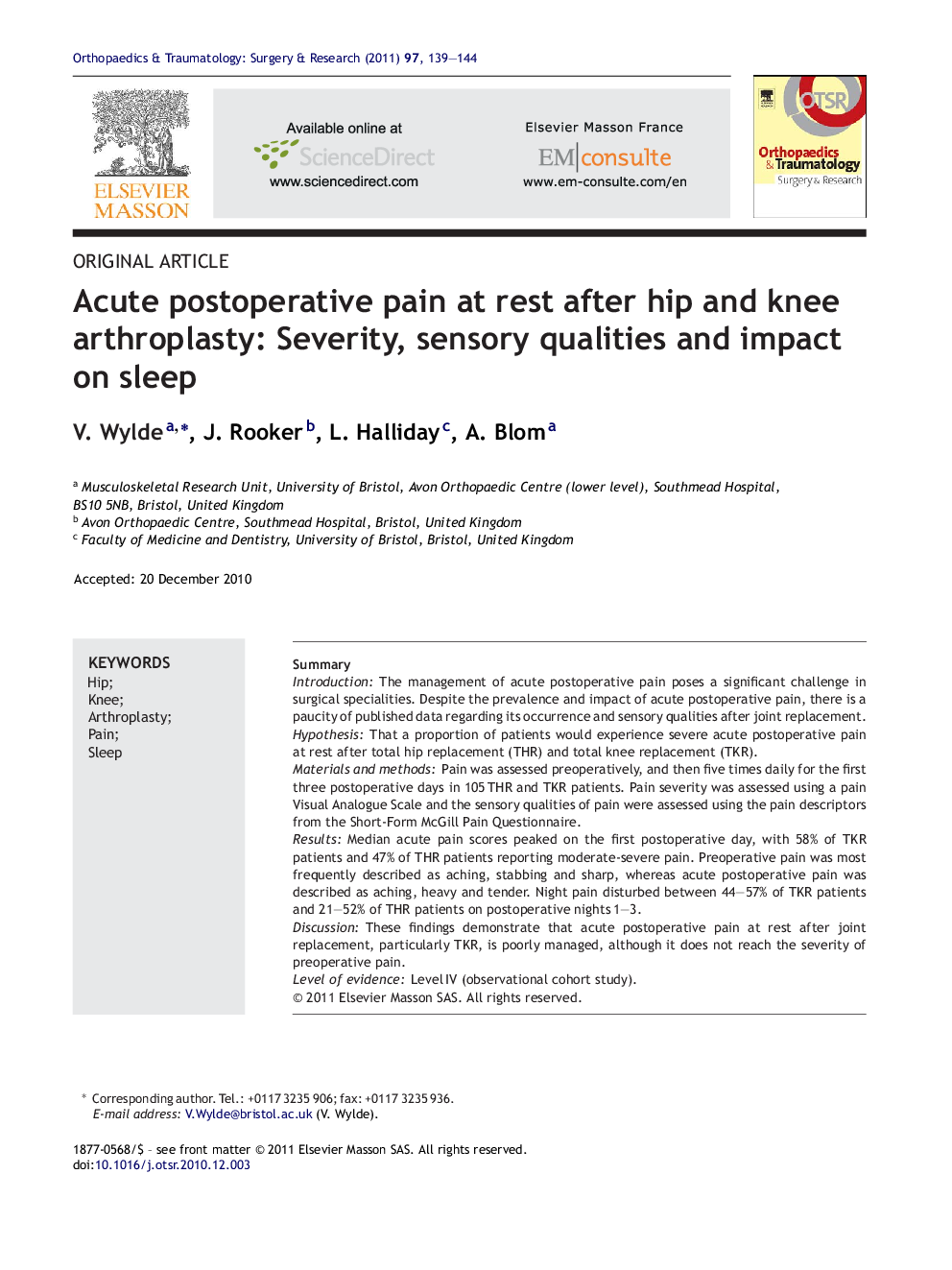| Article ID | Journal | Published Year | Pages | File Type |
|---|---|---|---|---|
| 4082077 | Orthopaedics & Traumatology: Surgery & Research | 2011 | 6 Pages |
SummaryIntroductionThe management of acute postoperative pain poses a significant challenge in surgical specialities. Despite the prevalence and impact of acute postoperative pain, there is a paucity of published data regarding its occurrence and sensory qualities after joint replacement.HypothesisThat a proportion of patients would experience severe acute postoperative pain at rest after total hip replacement (THR) and total knee replacement (TKR).Materials and methodsPain was assessed preoperatively, and then five times daily for the first three postoperative days in 105 THR and TKR patients. Pain severity was assessed using a pain Visual Analogue Scale and the sensory qualities of pain were assessed using the pain descriptors from the Short-Form McGill Pain Questionnaire.ResultsMedian acute pain scores peaked on the first postoperative day, with 58% of TKR patients and 47% of THR patients reporting moderate-severe pain. Preoperative pain was most frequently described as aching, stabbing and sharp, whereas acute postoperative pain was described as aching, heavy and tender. Night pain disturbed between 44–57% of TKR patients and 21–52% of THR patients on postoperative nights 1–3.DiscussionThese findings demonstrate that acute postoperative pain at rest after joint replacement, particularly TKR, is poorly managed, although it does not reach the severity of preoperative pain.Level of evidenceLevel IV (observational cohort study).
